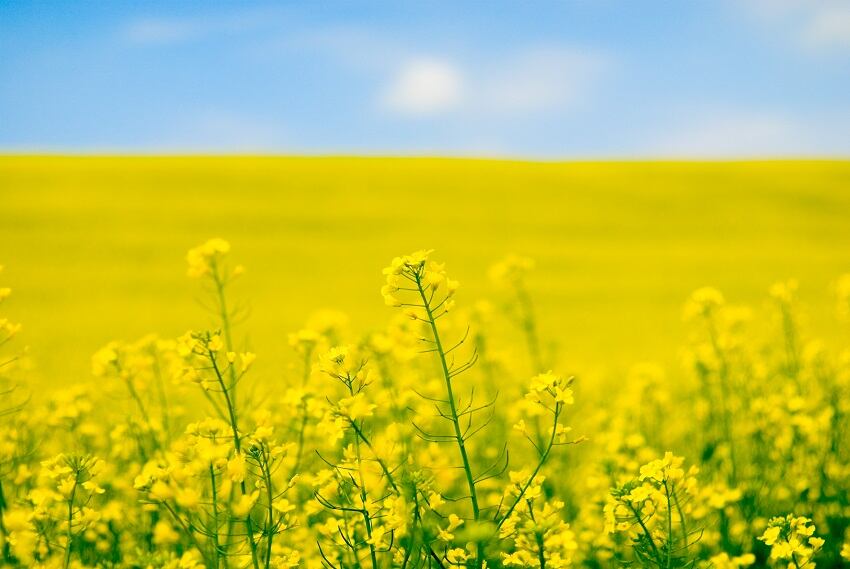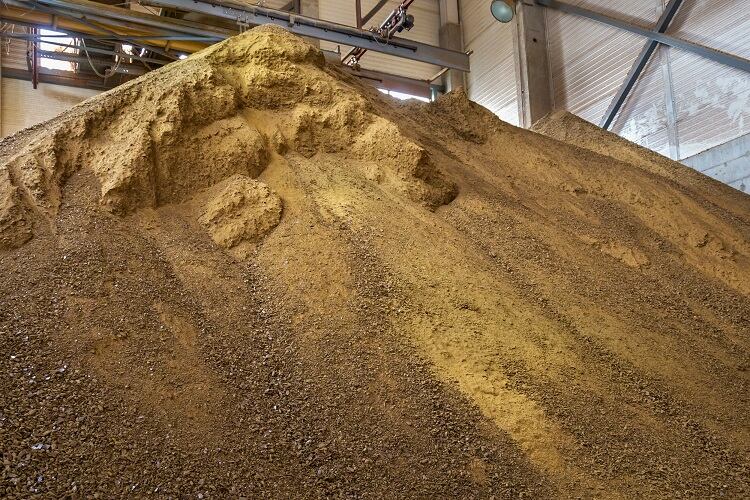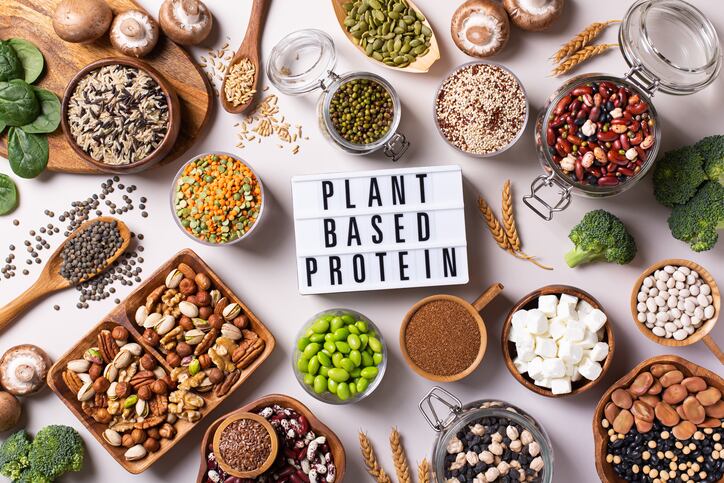The study, published in the journal Nature by researchers from the University of Copenhagen, found that it’s possible to prevent the accumulation of these glucosinolate compounds, therefore allowing rapeseed cake to be used as a protein source. Glucosinates are often found in the brassicaceous family, which also includes broccoli and cabbages.
The defender
Glucosinolate compounds in things like rapeseed cake are used to defend against things that could harm it, such as pathogens and herbivores.
However, since these defence compounds also cause a bitter taste which makes it largely unpalatable, and pose health risks to boot, they make it less useful to humans. Therefore, these days it is, most of the time, only used as animal feed (although on occasions, it has been successfully turned into a protein for humans).
This is a shame, because with its high protein content it has the potential to be a great source of alternative proteins.
“Rapeseed protein constitute ~50% of crude protein produced in [the] EU,” Barbara Ann Halkier, one of the paper’s authors, told FoodNavigator.
“However, today the rapeseed cake – what remains after the oil is pressed out of the seed - has a 30-40% protein content and an excellent amino acid profile, but is unexploited as food and has limited use (5-15% of feed pellets) as feed for chicken and poultry due to anti-nutritional glucosinolate defence compounds.”
And there is real potential for rapeseed cake. “Rapeseed cake proteins can be used . . . in whole food products, in müsli, in cakes etc,” Halkier told us.
The discovery
Using thale cress, which is very similar to the rapeseed plant, as a model plant, the researchers discovered where the glucosinates came from – the stalk of the plant, which connects the seeds to the podwall, is a glucosinate ‘factory.’
Furthermore, “with our scientific discovery, we identified three proteins in the model plant thale cress are critical for accumulation of glucosinolates in the seeds,” Halkier told us.
“Upon translation of our discovery from model plant to rapeseed, removal of these proteins by breeding in rapeseed will prevent accumulation of the glucosinolates in rapeseed cake.”
Using ‘transport engineering’ technology, the researchers were able to block the glucosinates from entering the seeds by removing the three proteins from the plant. This process could easily, because of their close relation, be transposed from the thale cress plant to the rapeseed crop.
One benefit of this is that, while the defence compounds no longer accumulate in the seeds, many remain in the plant after the process, so that its resistance they provide remains.
The future
Despite its high protein content, rapeseed cake has rarely been utilised as a food for humans. One reason for this is, according to European law, it can’t be.
“Today, rapeseed cake is not approved as food by European Food Safety Agency (EFSA) due to its content of glucosinolates,” Halkier told us.
“The glucosinolates in seeds of oilseed rape are goitrogenic, which means they can cause goitre (an enlarged thyroid), which is also why there is a limit to how much rape seedcake can be put into feed pellets today.
“The goitrogenic glucosinolates present in rapeseed cake are different from the glucosinolates in, for example, broccoli, that are health-promoting. The glucosinolates in oilseed rape have a pungent, wasabi-like flavour.”
This is why the discovery is so important. By solving many of the problems present in rapeseed cake, the study could open it up for use as a plant-based protein, crucial to the transition away from animal-based proteins. Because rapeseed is already grown widely, the supply would already be abundant.
“Our discovery, when translated to oilseed rape, will pave the way for EFSA approval of this locally-grown protein crop as novel food for human consumption,” said Halkier.
According to Halkier, the method could ‘absolutely’ be scaled up to fit the demands of the industry.
“Next step for us is to translate the finding to oilseed rape through breeding,” she told us, “and then to get the EFSA approval, which should be no problem as the argument for not getting the approval is the seed glucosinolate content, which will be absent when our finding has been implemented.”

In 2022, ingredients supplier DSM launched their own rapeseed protein, upcycling canola protein from rapeseed cake. The resulting product had a higher protein content than soy. It is made by mixing rapeseed press cake with an aqueous salt solution.
Sourced From: Nature
'Export of defensive glucosinolates is key for their accumulation in seeds’
Published on: 19 April 2023
DOI: https://doi.org/10.1038/s41586-023-05969-x
Authors: D. Xu, N. Christian Holm Sanden, L. Lykke Hansen, Z. Mussa Belew,
S. Roesen Madsen, L. Meyer, M. Egevang Jørgensen, P. Hunziker,
D. Veres, C. Crocoll, A. Schulz, H. Hassan Nour-Eldin and
B. Ann Halkier



